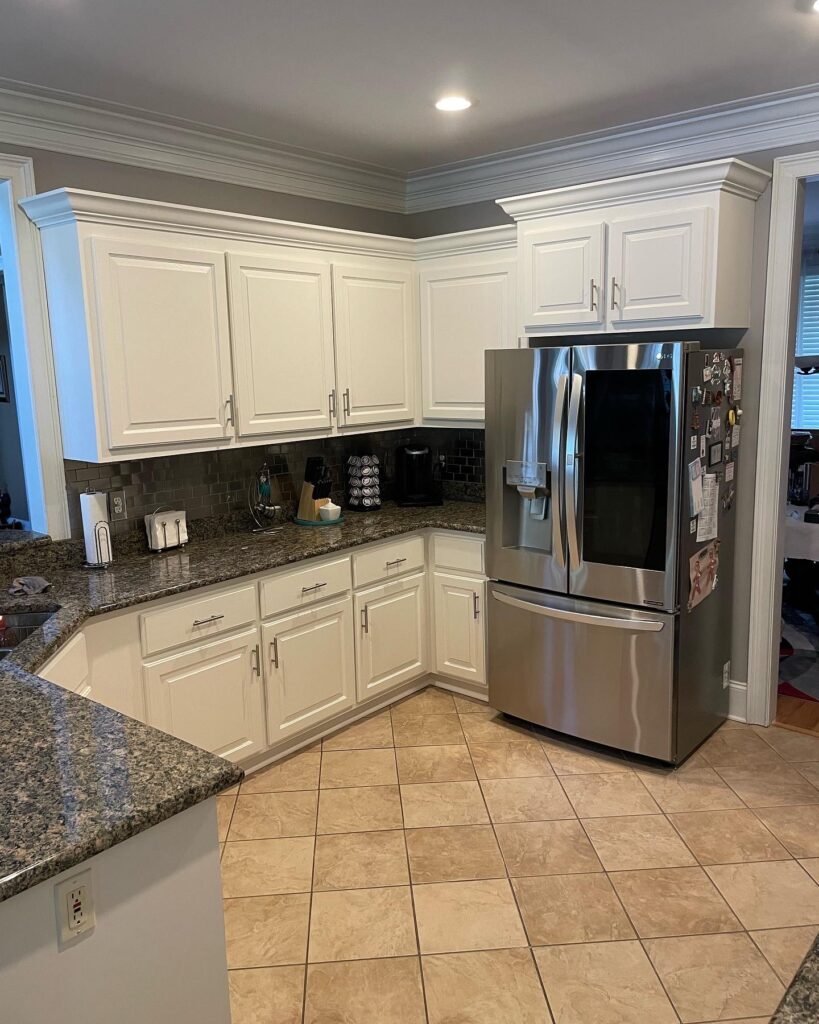More homeowners are making eco-friendly choices to create healthier living spaces while reducing their environmental impact. From energy-efficient appliances to sustainable building materials, green home upgrades are becoming the new standard. But one aspect of home improvement is often overlooked—paint.
Traditional paints release volatile organic compounds (VOCs) that contribute to indoor air pollution, health issues, and environmental damage. Fortunately, low-VOC and zero-VOC paints provide a safer alternative without sacrificing quality or durability.
This guide explores how choosing low-VOC paints can improve indoor air quality, reduce pollution, and make your home more sustainable.
What Are VOCs, and Why Are They Harmful?

Understanding VOCs in Paint
VOCs (volatile organic compounds) are chemicals that evaporate into the air as paint dries. These compounds help paint adhere to surfaces, speed up drying times, and enhance durability. However, they also release toxic fumes that can linger in your home for weeks or even months.
Common sources of VOCs in paint include:
- Solvents – Help paint spread evenly but emit high levels of VOCs.
- Binders – Improve adhesion but can contribute to air pollution.
- Additives – Enhance color and durability but may release harmful fumes.
The Environmental Impact of VOCs
VOCs don’t just affect indoor air quality—they contribute to outdoor pollution as well. When released into the atmosphere, VOCs react with nitrogen oxides and sunlight to create ground-level ozone (smog), which is harmful to both humans and ecosystems.
Other environmental concerns include:
- Water and soil contamination – Improper disposal of traditional paint can pollute natural resources.
- Toxic air byproducts – VOCs react with pollutants in the air, forming secondary toxins that degrade air quality.
Health Risks Associated with VOCs
Even short-term exposure to VOCs can cause:
- Headaches, dizziness, and nausea
- Eye, nose, and throat irritation
- Fatigue and difficulty breathing
Long-term exposure is even more concerning. Studies suggest that prolonged contact with high VOC levels may increase the risk of:
- Respiratory diseases such as asthma and bronchitis
- Organ damage (especially liver and kidneys)
- Potential links to certain cancers
Vulnerable groups, including children, pregnant women, seniors, and individuals with asthma or allergies, are at the highest risk.
How Low-VOC Paints Help the Environment

What Makes Low-VOC Paint More Eco-Friendly?
Low-VOC paints minimize harmful chemical emissions, making them a safer choice for both indoor air quality and the environment. Unlike traditional paints that release high levels of volatile organic compounds, low-VOC options contain significantly fewer pollutants. This reduces health risks while creating a cleaner, fresher living space.
These paints also rely on safer solvents and natural ingredients instead of harsh petroleum-based chemicals. Many are water-based, which means they produce less hazardous waste during cleanup and disposal. This small change can have a big impact, improving both home air quality and overall environmental sustainability.
Reducing Air Pollution and Smog Formation
Traditional paints emit high VOC levels that contribute to outdoor pollution. Choosing low-VOC or zero-VOC paints helps reduce smog-forming pollutants, improving air quality in urban areas.
Decreasing Toxic Waste and Contamination
- Low-VOC formulas produce less toxic runoff when cleaning brushes or disposing of leftover paint.
- Many use biodegradable or natural pigments, making them safer for the environment.
Sustainable Production and Eco-Friendly Packaging
Many paint manufacturers are taking extra steps to ensure their products are as eco-friendly as possible. Some brands now use renewable energy sources to power their production facilities, cutting down on carbon emissions. Others have embraced sustainable packaging, using recycled or biodegradable containers to reduce waste.
These innovations make low-VOC paint an even smarter choice. It’s not just about what’s inside the can—it’s also about how the product is made and how it impacts the environment long after the painting is done.
Comparing Low-VOC and Traditional Paints – Is It Worth the Switch?

How Do Low-VOC Paints Perform Compared to Traditional Paints?
| Factor | Traditional Paints | Low-VOC Paints |
|---|---|---|
| VOC Content | High | Low or Zero |
| Air Pollution Impact | Contributes to smog | Minimal emissions |
| Indoor Air Quality | Poor (lingering fumes) | Healthier, fewer odors |
| Durability | High | Comparable with premium brands |
| Cost | Lower upfront | Slightly higher upfront, but better long-term value |
Is Low-VOC Paint as Durable as Regular Paint?
Thanks to modern advancements, low-VOC paints now offer the same durability as traditional options. Premium brands provide excellent adhesion, fade resistance, and mildew protection.
Does Low-VOC Paint Cost More?
- Upfront cost: Slightly higher due to eco-friendly raw materials.
- Long-term savings: Fewer repaints needed, reduced health risks, and energy-efficient options (some reflective paints help with insulation).
Choosing the Best Eco-Friendly Home Paint
Understanding Low-VOC vs. Zero-VOC vs. Natural Paints
| Type | VOCs? | Best For | Example Brands |
|---|---|---|---|
| Low-VOC | Minimal | General use, indoor walls | Behr Premium Plus, Sherwin-Williams Harmony |
| Zero-VOC | Near zero | Hypoallergenic homes | Benjamin Moore Natura, Clare Paint |
| Natural Paints | No synthetic chemicals | Ultra-green homes | ECOS Paints, BioShield |
Top Low-VOC Paint Brands for a Sustainable Home
- Benjamin Moore Natura – Zero-VOC, high durability, washable.
- Sherwin-Williams Harmony – Low-VOC, odor-reducing technology.
- Farrow & Ball – Eco-friendly pigments, high-end finish.
- ECOS Paints – Non-toxic, ideal for sensitive individuals.
- Behr Premium Plus – Budget-friendly, GreenGuard-certified.
Certifications to Look for in Eco-Friendly Paints
Not all low-VOC paints are created equal, which is why certifications matter. These labels help homeowners identify products that meet strict environmental and health standards.
GreenGuard Gold Certification ensures that a paint has low chemical emissions, making it a safer choice for indoor spaces, especially in homes with children, elderly individuals, or those with respiratory sensitivities. LEED-compliant paints are recognized for their contribution to sustainable building projects, helping homeowners and contractors meet green building standards. The EPA Safer Choice Label further guarantees that the paint is formulated with environmentally safe ingredients, reducing overall environmental impact.
Checking for these certifications ensures that the low-VOC paint you choose is both effective and truly eco-friendly.
Tips for Painting a Green Home

Kitchen island with marble wotktop in luxurious interior
When to Consult a Professional Painter for a Sustainable Home
Painting a home with low-VOC products is a great step toward sustainability, but achieving the best results requires knowledge and precision. In many cases, hiring a professional painter can ensure a safer, more efficient, and environmentally responsible project.
Experienced painters can help homeowners choose the best low–VOC brands for their specific needs, ensuring both performance and air quality benefits.
Conclusion: Low-VOC Paints Are a Smart Choice for a Greener Home
Switching to low-VOC or zero-VOC paints is one of the simplest ways to create a healthier home and reduce environmental impact. These paints improve indoor air quality, minimize pollution, and support sustainable manufacturing practices. Whether you’re taking on a DIY project or hiring a professional painter, choosing low-VOC paints benefits both your family and the planet.

